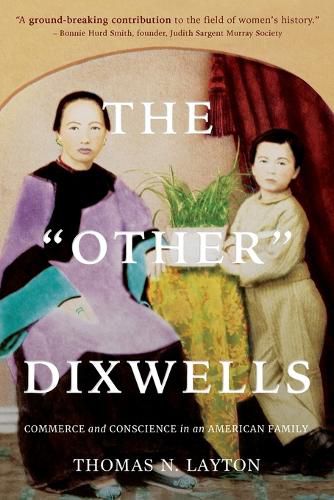Readings Newsletter
Become a Readings Member to make your shopping experience even easier.
Sign in or sign up for free!
You’re not far away from qualifying for FREE standard shipping within Australia
You’ve qualified for FREE standard shipping within Australia
The cart is loading…






This title is printed to order. This book may have been self-published. If so, we cannot guarantee the quality of the content. In the main most books will have gone through the editing process however some may not. We therefore suggest that you be aware of this before ordering this book. If in doubt check either the author or publisher’s details as we are unable to accept any returns unless they are faulty. Please contact us if you have any questions.
Who could have imagined that the Chinese opium trade, American feminism, and the abolitionist crusade could be connected, or that an entire branch of a prominent Boston commercial family could have been erased from the historic record for a century-and-a-half, or that a multi-decade saga to restore them to history would begin when archaeology students excavated Chinese potsherds from a Native American archaeological site atop a remote ridge on the north coast of California?
Archaeologist Tom Layton follows those potsherds to their origin on the 1850 shipwreck of the Frolic, a clipper brig, owned by American merchants who hauled opium from India to China. Those potsherds lead to George Dixwell-opium expert, inventor, and part owner of the Frolic-and to clues about his marriage in China to Hu Ts'ai-shun, a Manchu woman. Further research leads to the women of Dixwell's family tree who turned out to be writers and activists-aunt Judith Sargent Murray, the grandmother of American Feminism, and her niece Henrietta Sargent, a fierce abolitionist who reported the first public speech of an escaped slave-Frederick Douglass.
Finally the sherds lead Layton to Ts'ai-shun's four American great-granddaughters who had preserved a trove of letters, photos, and diaries that enabled this story to be told.Layton reveals his scientifically documented archaeological record then dons the hat of a novelist, filling in the spaces among the facts, bringing these characters to life, and producing an unforgettable read-a true adventure revealing the successes, failures, passions, and secrets of a 19th-century American family.
$9.00 standard shipping within Australia
FREE standard shipping within Australia for orders over $100.00
Express & International shipping calculated at checkout
This title is printed to order. This book may have been self-published. If so, we cannot guarantee the quality of the content. In the main most books will have gone through the editing process however some may not. We therefore suggest that you be aware of this before ordering this book. If in doubt check either the author or publisher’s details as we are unable to accept any returns unless they are faulty. Please contact us if you have any questions.
Who could have imagined that the Chinese opium trade, American feminism, and the abolitionist crusade could be connected, or that an entire branch of a prominent Boston commercial family could have been erased from the historic record for a century-and-a-half, or that a multi-decade saga to restore them to history would begin when archaeology students excavated Chinese potsherds from a Native American archaeological site atop a remote ridge on the north coast of California?
Archaeologist Tom Layton follows those potsherds to their origin on the 1850 shipwreck of the Frolic, a clipper brig, owned by American merchants who hauled opium from India to China. Those potsherds lead to George Dixwell-opium expert, inventor, and part owner of the Frolic-and to clues about his marriage in China to Hu Ts'ai-shun, a Manchu woman. Further research leads to the women of Dixwell's family tree who turned out to be writers and activists-aunt Judith Sargent Murray, the grandmother of American Feminism, and her niece Henrietta Sargent, a fierce abolitionist who reported the first public speech of an escaped slave-Frederick Douglass.
Finally the sherds lead Layton to Ts'ai-shun's four American great-granddaughters who had preserved a trove of letters, photos, and diaries that enabled this story to be told.Layton reveals his scientifically documented archaeological record then dons the hat of a novelist, filling in the spaces among the facts, bringing these characters to life, and producing an unforgettable read-a true adventure revealing the successes, failures, passions, and secrets of a 19th-century American family.